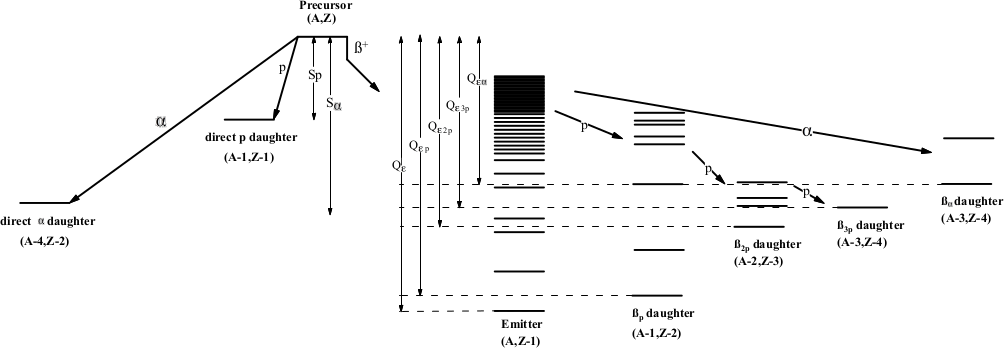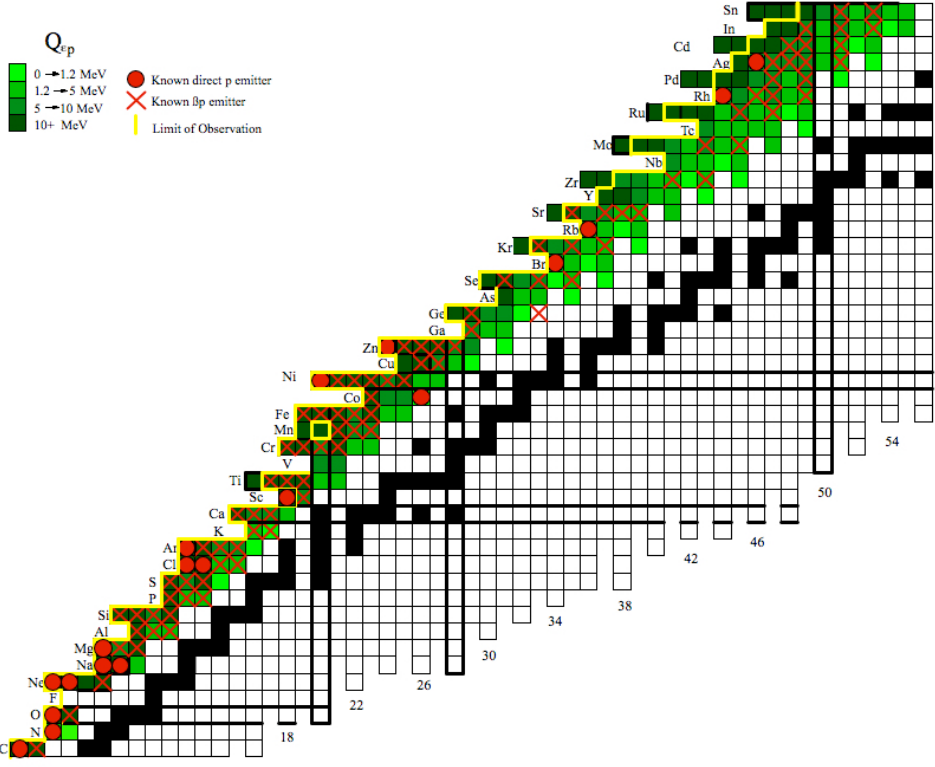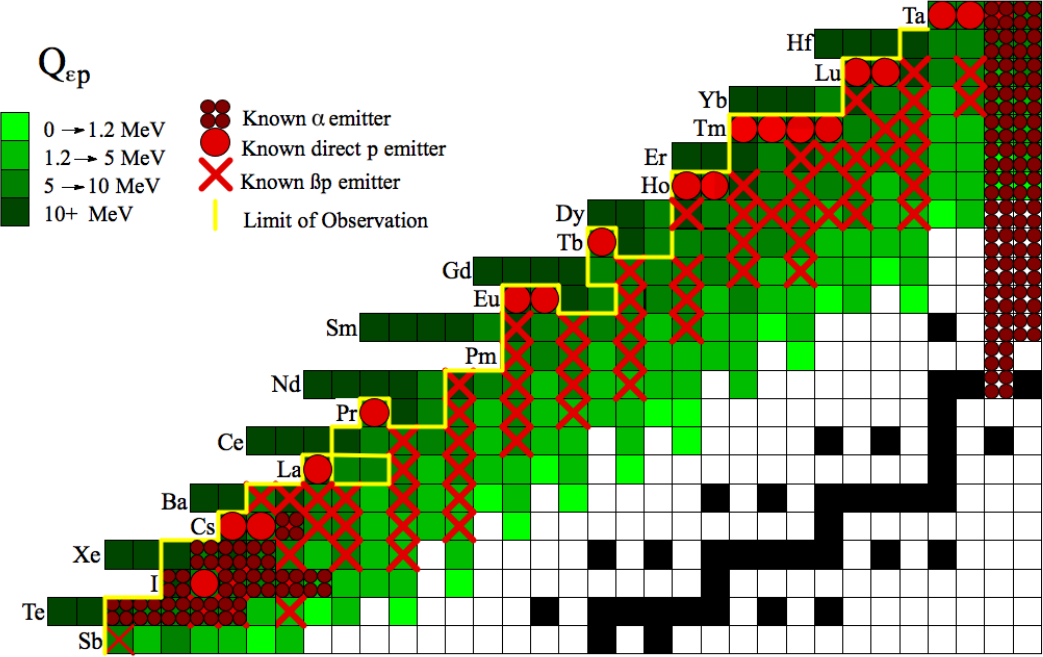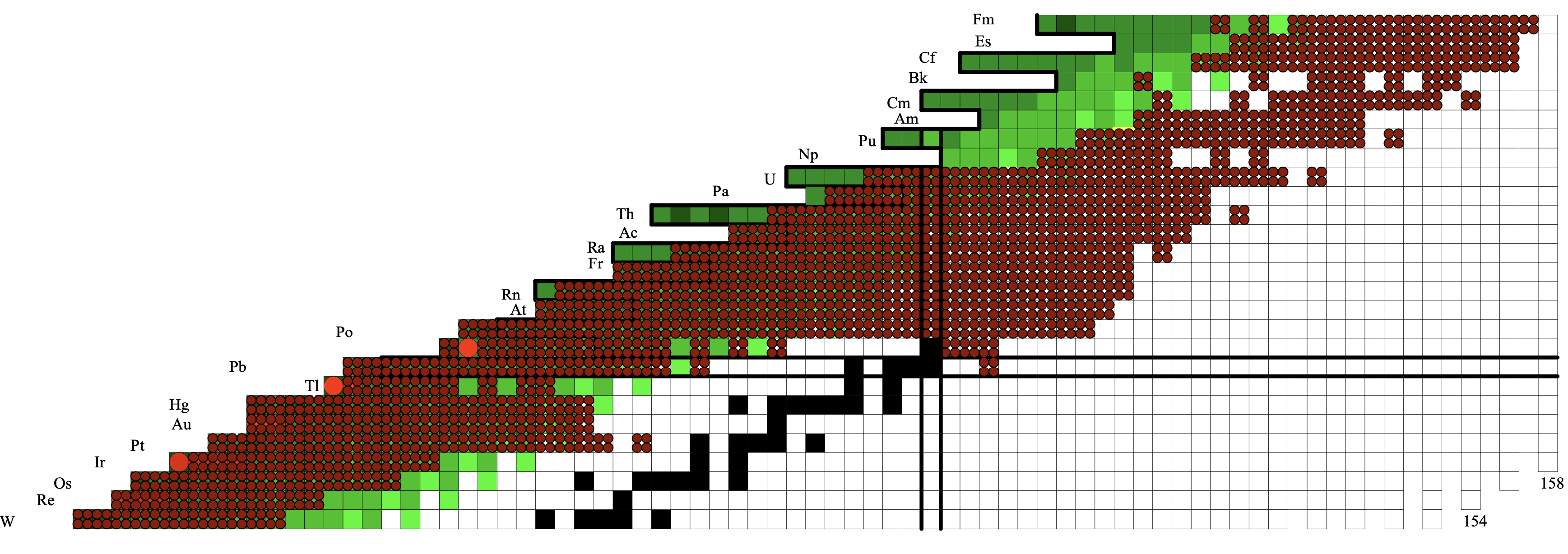Nuclei far from stability reveal properties of nuclear structure phenomena at an extreme imbalance of the number of neutrons and protons with respect to stable nuclei, allowing a better understanding of fundamental nuclear interactions. In most cases, the study of heavy charged particle decay modes is the only method available to populate the nuclear states necessary to obtain this information.
Nuclei near the proton drip line with large Q values for β+ decay often β decay to excited states that subsequently decay by the emission of a proton (or alpha particle). This is known as beta-delayed proton (or alpha) emission (β+p or β+α). It is a typical decay mode of very neutron-deficient nuclei. Valuable information for the ground state in the precursor, such as half life, spin, and parity, can be obtained by studying the β+p-decay properties. The high efficiency and unique experimental signature for detecting protons allows for the study of states in the β+-decay daughter that are not accessible through other means. By measuring the properties of protons emitted to a known state in the daughter, information on the structure of the proton-unbound state can be obtained.

Figure 1 Schematic of a proton-rich nucleus that is energetically open to direct and β+-delayed proton and alpha emission.
Beta-delayed proton emission is a two step process in which a proton-rich precursor nucleus beta-decays into a state in the emitter that is proton unbound. Proton decay from this unbound state occurs rapidly, so the overall half-life is characteristic of the β-decay half life. This type of decay is energetically possible when the mass of the parent precursor (A, Z) is larger than the mass of the β+p daughter (A-1, Z-2) plus the mass of the emitted proton. For nuclei that are across the proton drip line (i.e. the proton separation energy Sp is negative), direct proton emission is a competing decay mode. When emission of a proton (or alpha) is energetically possible, the proton can tunnel through the Coulomb and centrifugal barriers. While the decay rate of β decay changes relatively slowly as the Q-value increases, emission of a proton from an unbound state changes rapidly as the proton energy increases. Observation of protons or alphas directly emitted from these isotopes allows us not only to establish the limits of stability for a given element, but also gives information on the structure and mass of the parent nucleus. These decay modes are illustrated in Figure 1 for a precursor nucleus that is unbound to direct and β+-delayed particle emission.

Figure 2 Known β+-delayed and direct p emitters and Qεp values for all known and predicted β+p emitters from C to Sn.
Beta-delayed proton emission has been observed in every element from C (Z=6) to Lu (Z=71). For high-Z nuclei above N=84, α emission becomes the dominant decay. Figures 2 - 4 graphically show the known β+p and direct p and α emitters (from C to Fm) as well as the deduced Qεp values [Wan21] for all known and predicted β+p emitters.

Figure 3 Known β+-delayed and direct p and α emitters and Qεp values for all known and predicted β+p, direct p and α emitters from Sb to Ta.
In this work we present an evaluation/compilation of all known delayed and direct heavy charged particle emitters (p, α, f, and cluster) from Li to Og, which is updated regularly as new information becomes available. This includes branching ratios, half lives, and all relevant Q and S values (taken or calculated from Ref. [Wan21]) listed for those nuclei where these decays are energetically possible. In addition, for those nuclei with known resolved proton and alpha transitions, their particle energies, intensities, as well as energies of the particle-emitting states are compiled. A list of experimental references for each precursor is also given in the corresponding data table. The nuclei are organized by their isospin projection (Tz) in this evaluation, where $$ T_{z} = \frac{(N-Z)}{2}. $$

Figure 4 Known direct p and α emitters and Qεp values for all known and predicted β+p, direct p and α emitters from W to Fm.
In the current version of the database complete compilations from Tz = -4 to Tz = +31 are included. This database will be updated as new papers are published. Information from this database can currently be downloaded as a PDF document as we are developing a more useful format for future dissemination.
Any corrections, additions, or suggestions to improve this database should be sent to batchelder@berkeley.edu